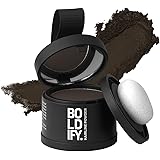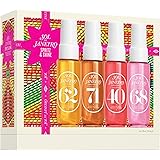The video above quickly highlights several fragrances that often leave enthusiasts wanting more, primarily due to issues with performance or a lack of originality. For the discerning nose, a scent needs to do more than just smell pleasant; it must project confidence, offer lasting power, and ideally, present a unique olfactory narrative. This detailed dive explores why certain designer and niche offerings frequently fall short in these critical areas, helping you navigate the vast and sometimes overwhelming world of perfumery.
Sillage & Longevity: The Performance Predicament
In the realm of fine fragrances, “performance” is a non-negotiable metric, encompassing both sillage (how much a scent radiates from the wearer) and longevity (how long it remains detectable). A beautiful composition is ultimately diminished if it vanishes within an hour or two, or if its presence is barely noticeable beyond a skin scent. This is a common complaint among collectors who expect more for their investment.
Imagine investing in a new eau de parfum, only for its captivating opening to dissipate before you even arrive at your destination. This scenario perfectly encapsulates the frustration with scents like Dolce & Gabbana Light Blue. While its fresh, citrusy profile is undeniably appealing and a classic for many, its ethereal longevity often means reapplication is constant, a significant drawback for daily wear.
Similarly, Rochas Man, lauded for its warm, coffee-infused sweetness, struggles with projection, limiting its potential as a true statement fragrance. Its intimate sillage, while perhaps charming in close quarters, often disappoints those seeking a more assertive presence. The same critique extends to Comme des Garçons Wonderwood; despite its sophisticated, smoky wood accord, its ephemeral nature detracts from an otherwise intriguing composition, making it a fleeting experience rather than a lasting impression.
Even beloved icons aren’t immune to performance issues. Acqua di Gio, a titan in the fresh aquatic category, still earns adoration for its iconic aroma. However, its modern formulations often provoke complaints about its diminished staying power, turning what was once a powerhouse into a mere whisper on the skin. Similarly, Goldfield & Banks Pacific Rock Moss offers a gorgeous, authentic coastal scent, yet its performance often struggles to justify its niche price tag, leaving wearers wishing for more tenacity.
The Pitfalls of Sweetness & Flanker Fatigue
The fragrance market has seen an undeniable surge in sweet, gourmand, and often cloying compositions, particularly within designer offerings and their endless stream of flankers. While sweetness can be alluring, an unbalanced or excessive sugariness can render a fragrance generic, juvenile, or simply overwhelming, especially when paired with lackluster performance.
Paco Rabanne’s 1 Million Parfum is a prime example of a flanker attempting to reinterpret a successful original but veering too far into saccharine territory. While the original 1 Million was known for its bold, spicy-sweet character, the Parfum version often comes across as overly sweet, losing the audacious, almost provocative edge that made its predecessor a signature scent for many. Its distinct identity is diluted, blending into a sea of similar overly sweetened mass-market releases.
Pure XS Night also struggles with this balancing act. It aims for a sensual, dark sweetness, but its execution can feel heavy-handed, lacking the nuanced complexity needed to elevate it beyond a simple sugar bomb. When combined with its reported performance issues, it becomes a difficult recommendation for those seeking depth and endurance.
The Quest for Uniqueness: Avoiding the “Boring” and Derivative
In a saturated market, true originality is a rare commodity. Many new releases, particularly from mainstream brands, often play it safe, recycling popular accords and existing scent profiles. For an expert audience, this lack of distinction can be the ultimate deal-breaker. A fragrance that is simply “nice” but derivative quickly becomes “boring,” failing to leave a memorable impression or express individual style.
So Scandal! by Jean Paul Gaultier, for instance, aims for bold, provocative femininity, but its execution often falls flat for seasoned enthusiasts. Its white floral and fruity composition, while pleasant, can feel somewhat conventional and less innovative than its branding suggests. It struggles to carve out a truly distinctive niche in an already crowded segment, leaving it feeling less “scandalous” and more, as some critics say, “boring.”
This quest for distinction also applies to scents with “okay performance but not unique.” Imagine a fragrance that lasts a reasonable amount of time but smells indistinguishable from five other popular releases. What is the point of wearing it if it doesn’t offer a singular experience? Such fragrances might be perfectly acceptable for a casual wearer, but for someone deeply invested in the art of perfumery, they represent a missed opportunity for olfactory expression. The desire for a unique scent often outweighs merely adequate longevity, pushing enthusiasts towards more adventurous and less conventional compositions that genuinely stand out.











